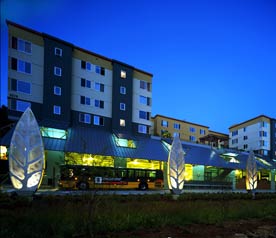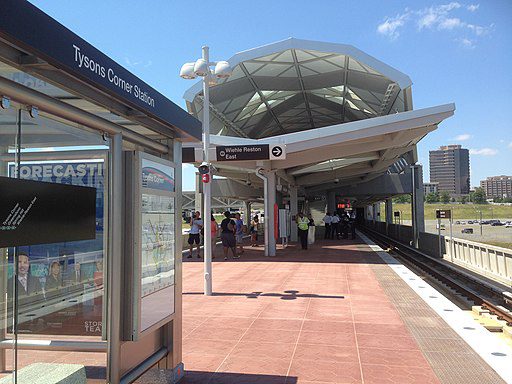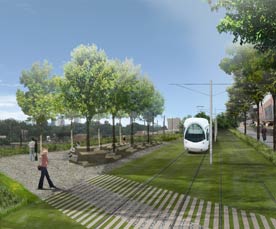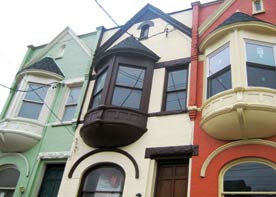The small suburban, almost exurban, Bay Area town of Pittsburg is part of the eastern section of Contra Costa County, informally called “East County”; it’s typically viewed as only marginally related to the Bay Area. There is one commuter transit station at the very edge of the city, surrounded by fairly low-density suburban housing developments and single-family homes. And there is traffic — lots of it.
As a result, the area transit agency, BART (Bay Area Rapid Transit) decided in the mid-2000s to extend its commuter rail service farther into East County. Pittsburg’s downtown was slated to be the first stop. Transportation planners thought the city would be amenable to the type of high-density, mixed-use development that typically follows a new transit investment.
They were also hoping that the city would welcome an affordable housing component to that development. After all, the Pittsburg corridor had long seen itself as the place where relatively affordable homes were located in the Bay Area; a lot of people who had been priced out of other areas were moving there.
But that actually meant that in Pittsburg, the prevailing sentiment was that there was enough affordable housing. “We knew it was going to be a fairly heavy lift there, because it’s very much not an urban place,” says Jeff Hobson, deputy director of TransForm, an transportation advocacy organization whose Great Communities Collaborative, which includes Greenbelt Alliance, Non-Profit Housing Association of Northern California, Reconnecting America, Urban Habitat, East Bay Community Foundation, and Silicon Valley Community Foundation, aims to get residents and organizations involved in the station-area planning processes around the Bay Area with the goal of making sure they encourage “vibrant neighborhoods with affordable housing, shops, jobs, and services within convenient walking distance near transit.”
The Great Communities Collaborative generally looks for a lead community group to help residents get involved in these planning processes. TransForm provides a toolkit to educate both members of community groups and the general public about why compact, affordable homes are important parts of having a good TOD strategy. For Pittsburg’s planning process, for example, TransForm worked aggressively with a handful of community organizations, most notably the Contra Costa Interfaith Supporting Community Organization (CCISCO), which is a PICO network faith-based organizing group, and the main community health clinic of La Clinica de la Raza, based in Fruitvale Village at Oakland’s Fruitvale BART station, one of the first modern transit villages, built in the 1990s.
Fruitvale is an inspiration to GCC. BART had originally sought to build a parking garage at the station. Unity Council, a CDC, along with other members of the community, objected, saying this would largely serve more suburban users and create a barrier between the community and the station. They won a plan that included over 39,000 square feet of retail space, over 114,000 square feet of office space, and 47 units of housing, 10 of which are designated as affordable for residents earning between 35 and 80 percent of the area median income.
GCC is also working in Berkeley, Oakland, and Antioch, a neighbor of Pittsburg. In Antioch, in April 2009, the city council voted unanimously in support of a station plan for 375 acres surrounding the future Hillcrest eBART Station that includes affordable housing near the station and a local hiring strategy for developments in the plan area.





Comments